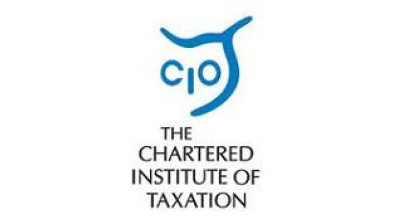Scottish tax increases offset by national insurance changes in new tax year

The start of the 2024/25 tax year tomorrow will mean further income tax divergence for Scottish taxpayers, however UK-wide National Insurance changes will mean an increase in the take home pay of Scots earning up to £112,900 compared with the tax year about to end, the Chartered Institute of Taxation has shown.
From tomorrow, the level of income at which Scottish taxpayers begin to pay more income tax than someone with the same earnings elsewhere in the UK1 will increase, from £27,850 to £28,867.
This is the result of the Scottish Government’s decision to increase the starter and basic rate bands by inflation. This will deliver a maximum income tax saving of £10.17 to those with earnings of up to £75,364.
The Scottish starter rate of tax means Scots with earnings under £28,867 will continue to pay less than if they lived elsewhere in the UK, but the introduction of a new 45% tax rate on earnings between £75,000 and £125,140, as well as an increase in the top rate of tax to 48%, will result in further income tax divergence for higher-earning Scots compared to their English counterparts.
But as the UK Government’s decision to reduce the main Class 1 National Insurance rate paid by employees to 8% will apply in Scotland, Scots with earnings of up to £112,900 will end up paying less overall compared to their liabilities in 2023/24.
Sean Cockburn, chair of the CIOT’s Scottish technical committee, said: “Although the Scottish Government’s tax choices will result in higher earning Scots paying more income tax from this month, these have been somewhat offset by the UK-wide National Insurance changes.
“It means that while Scots with earnings above £75,000 will pay more in income tax, those with earnings under £112,900 will actually end up paying less in tax and national insurance overall compared with the year just past.
“It illustrates what can happen when Scottish and UK tax choices interact with one another.”
The tax table below compares liabilities across a range of income levels. A negative figure means less tax paid and a positive figure, more tax paid.
| 2024/25 | 2024/25 | Difference | Difference | ||||||
| Earnings | Scotland Income Tax & Class 1 NIC liability | rUK Income Tax & Class 1 NIC liability | Scotland v rUK in 2024/25 | Scotland 2023/24 v Scotland 2024/25 | |||||
| £ | £ |
| £ | £ | |||||
| 10,000 | 0 | 0 | 0 | 0 | |||||
| 15,000 | 657 | 680 | -23 | -86 | |||||
| 20,000 | 2,057 | 2,080 | -23 | -261 | |||||
| 25,000 | 3,457 | 3,480 | -23 | -436 | |||||
| 28,867 | 4,563 | 4,563 | 0 | -581 | |||||
| 35,000 | 6,342 | 6,280 | +61 | -795 | |||||
| 40,000 | 7,792 | 7,680 | +111 | -970 | |||||
| 45,000 | 9,523 | 9,080 | +442 | -1,145 | |||||
| 50,000 | 12,023 | 10,480 | +1,542 | -1,320 | |||||
| 55,000 | 14,239 | 12,543 | +1,696 | -1,330 | |||||
| 60,000 | 16,439 | 14,643 | +1,796 | -1,330 | |||||
| 65,000 | 18,639 | 16,743 | +1,896 | -1,330 | |||||
| 70,000 | 20,839 | 18,843 | +1,996 | -1,330 | |||||
| 75,000 | 23,039 | 20,943 | +2,096 | -1,330 | |||||
| 80,000 | 25,389 | 23,043 | +2,346 | -1,180 | |||||
| 85,000 | 27,739 | 25,143 | +2,596 | -1,030 | |||||
| 90,000 | 30,089 | 27,243 | +2,846 | -880 | |||||
| 95,000 | 32,439 | 29,343 | +3,096 | -730 | |||||
| 100,000 | 34,789 | 31,443 | +3,346 | -580 | |||||
| 125,140 | 52,261 | 47,029 | +5,232 | +552 | |||||
| 150,000 | 64,691 | 58,714 | +5,978 | +800 | |||||
| 175,000 | 77,191 | 70,464 | +6,728 | +1,050 | |||||
| 200,000 | 89,691 | 82,214 | +7,478 | +1,300 | |||||
| 250,000 | 114,691 | 105,714 | +8,978 | +1,800 | |||||
| 300,000 | 139,691 | 129,214 | +10,478 | +2,300 | |||||
| 500,000 | 239,691 | 223,214 | +16,478 | +4,300 | |||||
| 1,000,000 | 489,691 | 458,214 | +31,478 | +9,300 |







